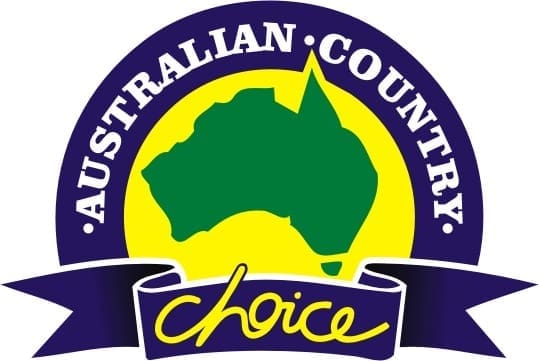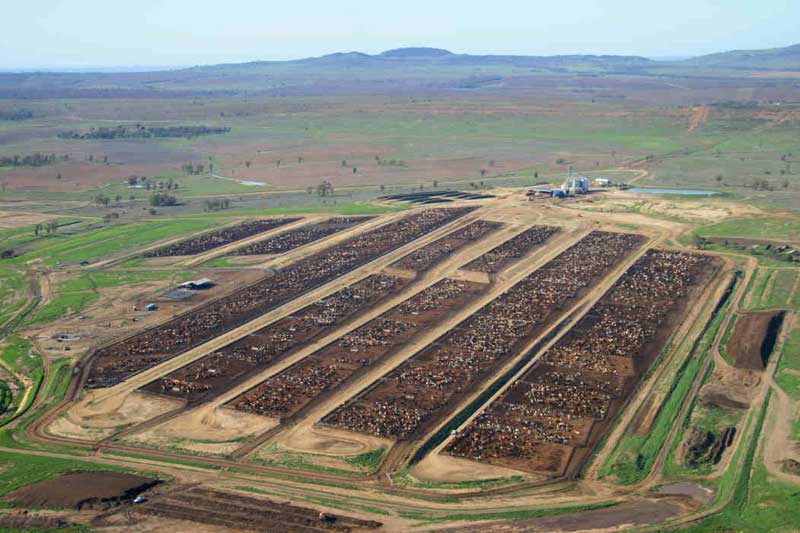Location: Brindley Park, Roma; Brisbane Valley, Brisbane Valley.
Capacity: 27,100 head (23,000 Brindley Park; 4100 Brisbane Valley)
2014 cattle turnover: 154,800 head
2003 Top 25 position: 7 (14,100 head capacity, annual turnoff 78,000)
THE Brindley Park and Brisbane Valley feedlot operations owned and operated by Australian Country Choice have grown in step with ACC’s customer, Coles Supermarkets, over the past two decades.
Privately owned and operated by the Lee family, ACC is a vertically integrated supply chain including leased and owned breeding and backgrounding properties, the two feedlots at Roma and the Brisbane Valley, and the ACC processing, value-adding and retail ready packing facility at Cannon Hill in Brisbane.
In addition to turnoff from Brindley Park and Brisbane Valley (approximately 600 head/day consigned to Cannon Hill), ACC processes grain finished yearling cattle from a network of feedlot contract-holders scattered across southern Queensland and northern NSW.
ACC has supplied t he Coles network with beef since 1972, but the relationship was formalised under a new contract in 1994 and renewed in 2015.
he Coles network with beef since 1972, but the relationship was formalised under a new contract in 1994 and renewed in 2015.
While expansion at the Brisbane Valley feedlot site is somewhat constrained by its locality, and has remained at 4100 head over the past 15 years, the larger Brindley Park site north of Roma has undergone a series of expansions to keep pace with Coles’ ever-growing beef demand.
Cattle were first fed at the site in 1968, growing in stages from 3000 head to 8000, 14,000 and currently 23,000 head.
Given recent changes to Queensland legislation, discussed elsewhere in this feature, there are plans afoot (no pun intended) to construct one additional row of pens at Brindley Park, potentially taking capacity out to about 26,000 head.
But the key limiting factor now at a site like Brindley is water access. With no provision in Queensland legislation to harvest overland flows for intensive agriculture use, the site is reliant on underground supply and integrated dams only.
Unlike other Top 25 entries who feed for dozens of customers, and perhaps half-a-dozen market end-points from Wagyu to yearlings, ACC feedlots have just one customer and one feed objective.
Cattle inducted at Brindley Park and Brisbane Valley average 55-65 days on feed, in order to meet Coles’ MSA and carcase objectives (neither Coles, nor Woolworths, for that matter, make “Grainfed” claims on their everyday beef offers).
What that means is that both feedlots account for a remarkably high annual stock throughput.
Without question, Brindley and Brisbane Valley are the hardest working yards in Australia, turning off a combined 154,800 head of yearling cattle last year (average HSCW245kg), with more than 6000 livestock movements (in and out) per week requiring “disciplined livestock logistics programs.”
Understandably, these numbers put a lot of pressure on the various livestock teams in supply, induction, on-feed and despatch, and Brindley needs a proportionately larger livestock/induction/despatch team than other feedlots of similar size, to manage.
The objective is to put on 100kg liveweight over the 55-65 day feeding period, without the use of an implant. Coles in 2010 adopted a no-added hormones strategy in all of its national beef offer.
Despite the fact that ACC is not constrained by ‘Grainfed cipher ‘requirements in terms of protein/energy levels in its ration, it feeds a remarkably conventional finisher ration, a little above 70pc grain. Because of its far western location (it is probably the most westerly large feedlot in Queensland) it does miss out on the opportunity to use by-products like WDGs, accessed by some other feedlots further east.
Backgrounding plays critical role
Around 60pc of the Brindley Park feedlot’s daily livestock intake comes from ACC-controlled breeding and backgrounding operations (either owned or leased), with the balance bought cattle. ACC controls about 42,000ha of backgrounding and growing country in its Roma aggregation, running around 18,000 cattle at any one time, as well as growing hay and silage. It allows most company-owned feeders to be simply walked into the Brindley yard, rather than trucked, providing a considerable advantage in terms of settling onto feed, animal health and early feedlot performance.
Other ACC supply properties are located from Blackall, Augathella, Morven and Mitchell areas. Winter oats agistment in the border river regions remains an important pre-feedlot management entry tool.
Heifers continue to make up about 70pc of the total throughput across company-owned and bought feeders in both yards.
Indicus content requirements have changed quite a bit over the years, as ACC/Coles became more focussed on eating quality/MSA performance. There are few cattle in the yards these days displaying what could be regarded as three-quarters Brahman content, with 50-66 pc content now the more regular ‘upper limit.’ The biggest proportion are crossbreds or composite breeds.
Not surprisingly, the gradual reduction in breed content has coincided with the provision of pen shade at Brindley Park. All established pens now have pen shade access.
The extent of pen shade added to feedyards across Eastern Australia over the past ten years has been a constant feature of Beef Central’s ongoing Top 25 report.
Most of Brindley Park’s hay and silage requirements are grown on the Roma aggregation, while wheat, barley and sorghum grain requirements are sourced from suppliers across the western downs.
The first two steam-flakers were installed in 2002, followed by two additional flaker mills in 2005, to handle the 200 tonnes of grain milled per day for single feeding. Nutrition management is provided at Brindley through IAP and at Brisbane Valley by NSA, with Kev Sullivan providing veterinary advice services to both yards.
Along with all other Coles grain-finished cattle contract holders, Brindley Park and Brisbane Valley are regularly benchmarked on performance, and have to meet certain animal performance and carcase quality targets.
In a considerable nod to the issue and importance of workplace health and safety in any feedlot environment, ACC sponsors an annual award for feedlot safety systems and management, coordinated through the Australian Lot Feeders Association.
This feature is brought to you by Lallemand Animal Nutrition.
- Click here to return to Top 25 Lotfeeders table.
- Click here to return to Top 25 Lotfeeders introductory article.




HAVE YOUR SAY